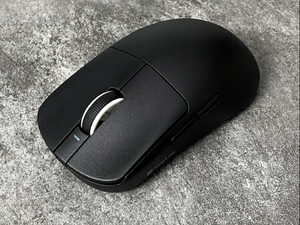
Consumer Electronics | Mouse Inspection Standards and Methods
Mouse Product Overview and Technology Classification
As a core input device for human-computer interaction, the mouse has undergone a technological evolution from mechanical to photoelectric and then to laser tracking. According to market research firm IDC, global mouse shipments are expected to reach 820 million units in 2023, with gaming mice accounting for over 35%, demonstrating a trend toward high-end and specialized mouse technology.
Product technology classification
1. By connection method :
-
Wired mouse : USB 2.0/3.0 or Type-C interface, delay <1ms
-
Wireless Mouse :
-
2.4GHz wireless (transmission distance ≤ 10m)
-
Bluetooth 5.0 (Compatibility testing must cover Windows/macOS)
-
2. By sensing technology :
-
Optical mouse : resolution 800-1600 DPI (office grade)
-
Laser mouse : resolution ≥4000DPI (esports grade)
-
Blue Shadow Technology : Strong Surface Adaptability (Microsoft Patent)
3. Positioning by function :
-
Office mouse (usually 3-button design)
-
Gaming mouse (6 or more programmable buttons, RGB backlight)
-
Vertical mouse (ergonomic design)
Appearance and structure inspection standards
Surface quality inspection
| Test items | Acceptance criteria | Detection method |
|---|---|---|
| Shell defects | No scratches/dents >0.3mm | 3D profilometer scanning |
| Coating quality | Hundred grid test ≥ 4B level | Grid marker + tape test |
| Key spacing | ≤0.5mm unevenness | Plug gauge measurement |
| Logo printing | No fading after 50 times of alcohol wiping | Friction tester |
Special requirements :
-
Hardness of non-slip rubber part 60±5 Shore A
-
Roller axial movement ≤0.3mm
-
Wire swing test ≥5000 times (wired model)
Core performance test specifications
Key Performance Indicators
1. Positioning performance test :
-
Resolution accuracy : measured value/nominal value ≥ 85%
-
Deviation : ≤10% (test distance 300mm)
-
Tracking speed : ≥1m/s (esports-level requires ≥3.5m/s)
2. Durability test :
-
Button life :
-
Main button (left/right): ≥ 1 million times
-
Side button: ≥500,000 times
-
Test frequency: 8 times/second (mechanical micro-movement)
-
-
Roller life : ≥200,000 turns (encoder type)
3. Mechanical properties :
-
Button pressure : 0.5N±0.2N (trigger travel 1.8-2.2mm)
-
Wire tension : ≥50N for 1 minute (USB interface)
Connection stability test solution
Wireless connection performance
1. 2.4GHz Wireless :
-
Transmission distance: 10 meters without disconnection
-
Anti-interference test: 10 devices working at the same time
-
Sleep wake-up time: ≤0.5 seconds
2. Bluetooth connection :
-
Pairing success rate: 100% (3 major operating systems)
-
Multi-device switching: ≤2 seconds delay
3. Wired connection :
-
Interface plug-in life: ≥5000 times
-
Line resistance test: ≤0.5Ω (5V power supply)
Environmental adaptability test standards
Climate environment testing
| Test items | Industrial-grade standards | Consumer-grade standards |
|---|---|---|
| Operating temperature | -10℃~55℃ | 0℃~40℃ |
| Storage temperature | -40℃~70℃ | -20℃~60℃ |
| Humidity test | 95%RH@40℃ | 90%RH@35℃ |
| Salt spray test | 48 hours | 24 hours |
Mechanical environmental testing
1. Vibration test :
-
Frequency range: 5-500Hz
-
Acceleration: 5G (30 minutes each in three axes)
2. Drop test :
-
Bare metal drop: 1m height (6 sides 3 times)
-
Package drop: 0.8m height (ISTA 3A)
3. Impact test :
-
Half sine wave: 50G/11ms (3 times each on 3 axes)
Packaging and labeling specifications
Sales packaging requirements
Essential elements :
-
Product model and color identification
-
DPI adjustable range description
-
Wireless operating frequency and compliance mark (FCC/CE)
-
Battery Information (Wireless Model)
-
Warranty terms (≥2 years)
Transport packaging :
-
Stacking test: ≥3 layers/72 hours
-
Vibration test: 0.5h (5-100Hz random vibration)
-
Anti-static packaging (esports-grade products)
Analysis of common quality defects
-
Cursor skips frames :
-
Check the cleanliness of the lens group
-
Verify sensor sampling rate (≥1000Hz)
-
-
Key combos :
-
Micro switch contact resistance test (≤50mΩ)
-
Shrapnel fatigue analysis (metallographic microscope)
-
-
Wireless Interference :
-
Spectrum analysis (2.400-2.4835GHz)
-
Multi-device coexistence test (≤3ms delay)
-
Suggestions for optimizing the inspection process
-
Sampling plan :
-
AQL 0.65 (critical defects)
-
Batch ≤ 5000: 50pcs sampling
-
-
Testing equipment :
-
High-precision mouse tester (error ±1%)
-
Optical table (granite-grade flatness)
-
RF test chamber (essential for wireless products)
-
-
Reporting requirements :
-
Contains FCC/CE pre-scan data
-
Attached is a list of key component suppliers
-
Provide failure analysis tree diagram
-
Through a systematic testing process, we ensure that our mice comply with the requirements of GB/T 18220-2012, "General Specification for Mice Used in Information Technology Equipment." Purchasers are advised to pay particular attention to core indicators such as sensor accuracy and wireless anti-interference capabilities. For esports-grade products, additional verification of specialized parameters such as 1000Hz polling rate and acceleration is required.
We provide professional third-party inspection and factory inspection services to ensure that the final tableware and kitchenware products delivered comply with standards, regulations and target market requirements, avoid disputes due to product quality issues, and improve supply chain management and quality control measures.
Share this product

Consumer Electronics | Mouse Inspection Standards and Methods
As a core input device for human-computer interaction, the mouse has undergone a technological evolution from mechanical to photoelectric and then to laser tracking. According to market research firm IDC, global mouse shipments are expected to reach 820 million units in 2023, with gaming mice accounting for over 35%, demonstrating a trend toward high-end and specialized mouse technology.
